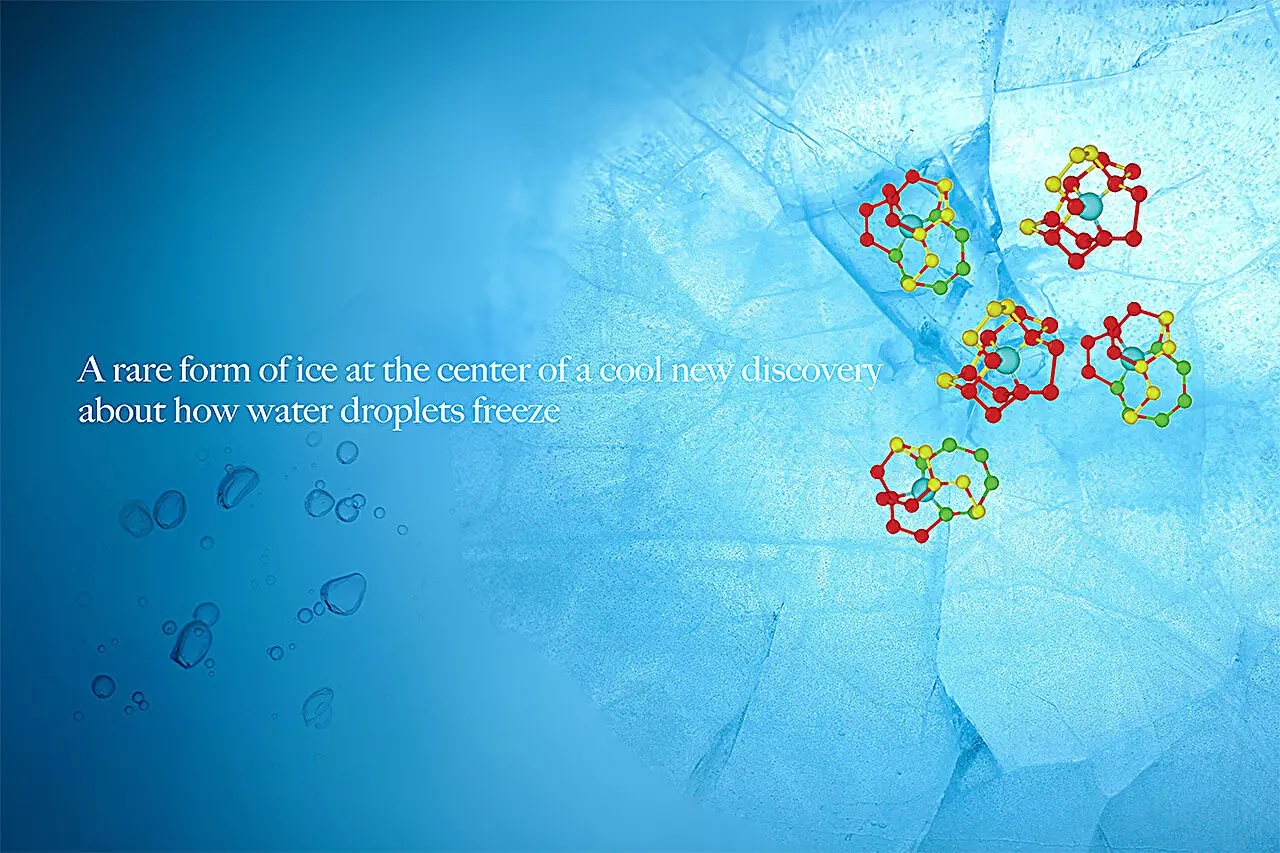Ice is not just a simple frozen substance – it is far more complex than most people realize. Scientists have identified over 20 different varieties of ice, each forming under specific combinations of pressure and temperature. One of the most common forms of ice, known as ice I, is the kind we use to chill our drinks. However, researchers in Japan have recently made an intriguing discovery: the existence of a new type of ice called ice 0. This unique form of ice has the ability to serve as a seed for the formation of ice crystals in supercooled water.
The traditional understanding of ice formation, also known as ice nucleation, involves the process occurring heterogeneously, usually at a solid surface. However, the research conducted by the Social Cooperation Research Department “Frost Protection Science” at the Institute of Industrial Science, The University of Tokyo, challenges this notion. The study revealed that ice crystallization can also take place just beneath the surface of water, where it meets the air. This unexpected phenomenon occurs around small precursors with a ring-shaped structure similar to that of ice 0.
Lead author of the study, Gang Sun, emphasized the significance of the findings, stating that water droplets are more likely to crystallize near the free surface under specific conditions. This revelation resolves a long-standing debate regarding where crystallization occurs more readily: on the surface or internally. The structure of ice 0 precursors closely resembles that of supercooled water, facilitating easier crystallization without needing to conform to the structure of regular ice. These tiny ice 0 precursors form spontaneously due to negative pressure effects caused by water’s surface tension.
Broader Significance of Understanding Ice Formation
The implications of this study extend beyond the realm of scientific curiosity. A deeper comprehension of ice formation and the role of ice 0-like precursors can offer valuable insights in various fields. In meteorology, for instance, the influence of ice formation via ice 0 precursors may have a more noticeable impact on small water droplets present in clouds. Moreover, this knowledge can also benefit technology, ranging from advancements in food sciences to improvements in air conditioning systems.
The study on the discovery of ice 0 and its role in ice formation sheds light on the intricate nature of this seemingly simple frozen substance. By challenging traditional notions of ice nucleation and highlighting the importance of ice 0-like structures, researchers have opened up new possibilities for understanding ice formation in different environments. This expanded understanding not only contributes to scientific knowledge but also has practical applications in various industries and fields of study.


Leave a Reply